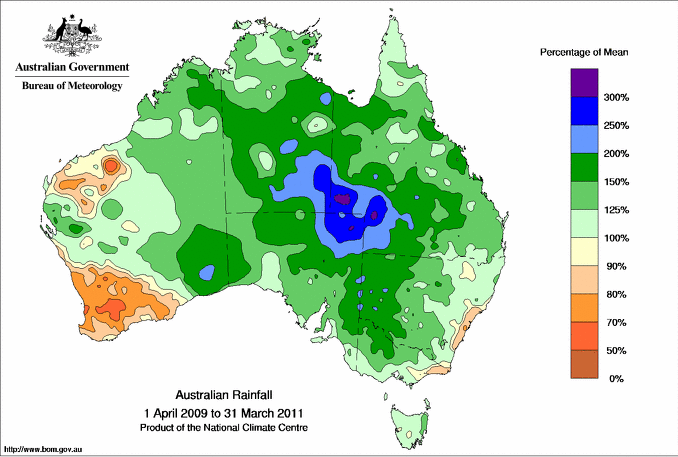IT was a long way from picture postcard blue skies in Cairns yesterday as the nation’s top 450 climate scientists gathered to take stock of global warming.
The tropical rainstorm may pale alongside the political cyclone that has been unleashed by the federal government’s talk about a carbon tax. But the continued wet weather may prove relevant to this week’s scientific discussions, which are expected to have a heavy focus on how much there is still to understand about climate change.
For Australia, whether the north can expect to get more or less rainfall because of global warming remains one of the great unknowns.
The Cairns meeting is Australia’s peak biannual conference at which climate scientists meet to discuss the state of research.
And while organisers of Greenhouse 2011 say participants represent a broad church, the uniform view is undeniably one of a warmer future for the planet.
Beyond that, everything from atmospheric carbon, feedback cycles, ocean temperatures, sea levels, carbon sinks, mitigation and adaptation are on the table for discussion.
Delegates will even be told how emotional responses to climate change represent a missing link to behaviour, with those who accept man-made climate change motivated to act by fear. Others who believe the climate is changing naturally are likelier to feel irritation and refuse to engage or respond.
CSIRO principal research scientist Kevin Hennessy says understanding the causes, both natural and human, of climate change is central to the conference agenda, as is consideration of future projections of climate change globally and regionally.
Surprisingly, a key theme through the conference will be the state of scientific uncertainty.
This does not mean that sceptics have crashed the CSIRO-sponsored climate change party, however.
“These are the real uncertainties as opposed to the uncertainties that some of the sceptics might claim are important,” Hennessy says.
The uncertainties include things such as the various causes of regional climate change and extreme weather events, uncertainty about the future level of greenhouse gas emissions, the rate of global warming, the rate of future sea level rises and the scale and impact of future extreme weather events.
“When we are talking about global warming it is not about whether there will be global warming but about the rate of change,” Hennessy says.



Global warming is real and is terrible, or why else have this stupid conference to begin with?
Oh, yeah! Exactly as we have predicted we have… well, just look at this map! Spiders drowning in central Australia, and wild cats in the south-east are thirsty!!!
Damn capitalism!
At the conference, John Church is spreading misinformation:
http://www.theaustralian.com.au/national-affairs/sea-rising-at-upper-end-of-forecast/story-fn59niix-1226033618850
Apparently the IPCC forecast is between 60 to 80cm by 2100. Even given his data of 3.2mm/year (which I’m assuming is looking at the last 18 years of data, not the current rate of around 1.4mm/year) , that means the rise is well behind predictions.
I guess when you orchestrate a scare campaign, you want to make everything look scary.
I’m uncertain as to what he said about certain uncertain aspects of the uncertainty that he is uncertain or certain about, yet he seems quite certain about what that may possibly be if certain conditions prevail and if certain uncertainties are the ones that matter. Super-duper computers certaionly can, of course, model this uncertain range of possibilities with astonishing accuracy, and with more computing power they could certainly be even more precisely uncertain.